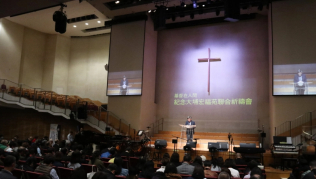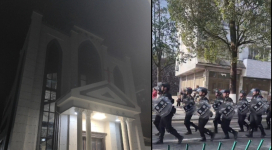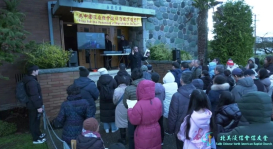CEDAR KEY, Fla. - The first tropical storm of the 2006 Atlantic hurricane season pelted Florida's gulf coast with rain Tuesday morning, but forecasters said they didn't believe Alberto would reach hurricane strength as earlier feared.
Wind gusts up 60 mph littered coastal communities with tree limbs, and the rain and storm surge left water standing in streets along the coast between Apalachicola to Tampa, but most of the problems appeared to be minor.
"We dodged a bullet," said Cedar Key City Commissioner Pat O'Neal. He said the island community was still worried about the afternoon's high tide and the potential for storm surge.
National Hurricane Center director Max Mayfield said his staff would likely downgrade the hurricane warning it had issued Monday, when Alberto unexpectedly gained strength.
"The big concern now is going to be shifting to the rainfall and the tornado threat as it moves along the southeastern (U.S.) coast line," Mayfield said Tuesday.
Officials at the state emergency operations center were clearly relieved. State meteorologist Ben Nelson said dry air had pushed into the storm and prevented it from growing stronger.
But state Emergency Management director Craig Fugate warned that the state wasn't yet in the clear. Parts of Florida's gulf coast could see a storm surge of up to 9 feet. More than 20,000 people, many in low-lying areas, were under evacuation orders.
"Let's get it on through before we do our happy feet dance," Fugate said.
At 8 a.m. EDT, Alberto was centered about 50 miles east-southeast of Apalachicola and 75 miles west-northwest of Cedar Key, and was moving northeast at about 9 mph toward an expected landfall in the area around midday, the hurricane center said. Its top sustained wind was 65 mph; the minimum for a hurricane is 74 mph.
A large chunk of the storm was already over Florida by mid-morning, and its outer rain bands stretched into southeastern Georgia, where forecasters warned of a threat of tornadoes.
A tropical storm warning extended from Flagler Beach, Fla., north to South Santee River, S.C. A flood watch was issued for southeastern South Carolina, where more than 5 inches of rain was possible, and forecasters said central Florida and southeastern Georgia could get 4 to 10 inches of rain.
Terence McElroy, a spokesman for the state's Division of Forestry, said the tropical storm's rain could help lower the wildfire risk — as long as it didn't bring high winds. The only significant wildfires still burning Tuesday were in Brevard and Volusia counties on the Atlantic Coast, he said.
Early Tuesday as the storm headed for landfall, wind gusts hit 60 mph in Tampa, and about 4 to 6 inches of much-needed rain had fallen in areas that had been parched and at a high risk of wildfires, said Charles Paxton, a meteorologist at the National Weather Service in Ruskin.
There were reports of limited power outages in the Tampa Bay area, along with fallen tree limbs. A small construction barge hit the Howard Frankland Bridge in Tampa Bay, but no structural damage was reported and traffic was flowing.
St. Petersburg resident Mary Finn stayed home from work because she was unsure how hard the storm would hit Tampa Bay.
"I slept through everything," she said Tuesday morning.
Even though Alberto wasn't expected to become a major storm, Florida officials weren't taking any chances after last year's deadly and destructive hurricane season.
Gov. Jeb Bush signed a declaration of emergency allowing him to call up the National Guard and put laws against price gouging in place if necessary, and evacuation orders were posted for people in mobile homes or low-lying areas in at least five coastal counties including about 21,000 residents of Citrus, Levy and Taylor counties.
Homeowners gassed up their vehicles and stocked up on chain saws, plywood and other emergency supplies. Alberto also prevented the crew of space shuttle Discovery from flying Monday to the Kennedy Space Center from Houston for several days of dress rehearsals for their expected launch in July.
The tropical depression that produced Alberto formed Saturday, nine days after the June 1 start of the hurricane season. The storm's winds accelerated with startling speed Monday from 50 mph to 70 mph in just three hours. The minimum for a named storm is 39 mph.
Scientists say the 2006 season could produce as many as 16 named storms, six of them major hurricanes. Last year's hurricane season was the most destructive on record and the busiest in 154 years of storm tracking, with a record 28 named storms and a record 15 hurricanes.
Associated Press Writers Phil Davis in Tampa, Fla., Michelle Spitzer in Miami, Andrea Rodriguez in Havana, Cuba, and Jennifer Kay in Miami contributed to this report.







